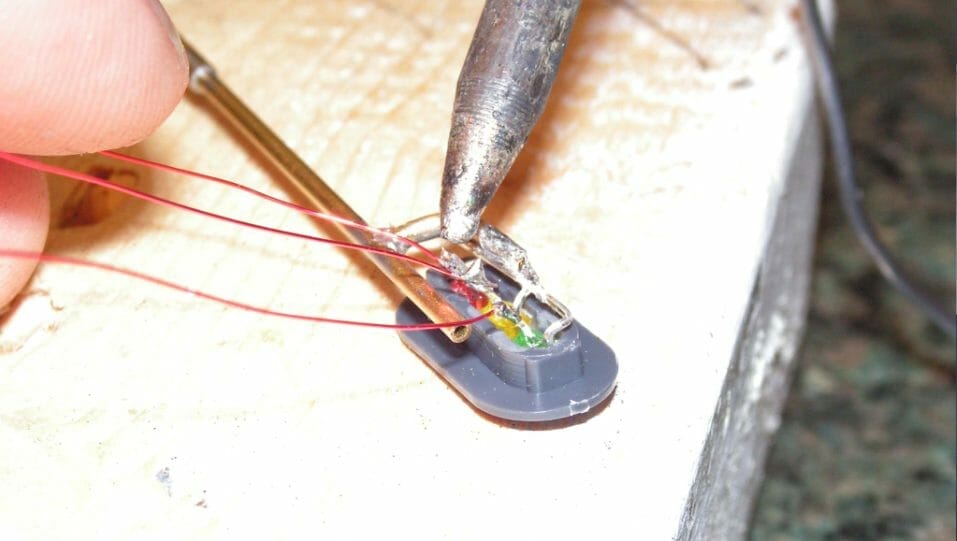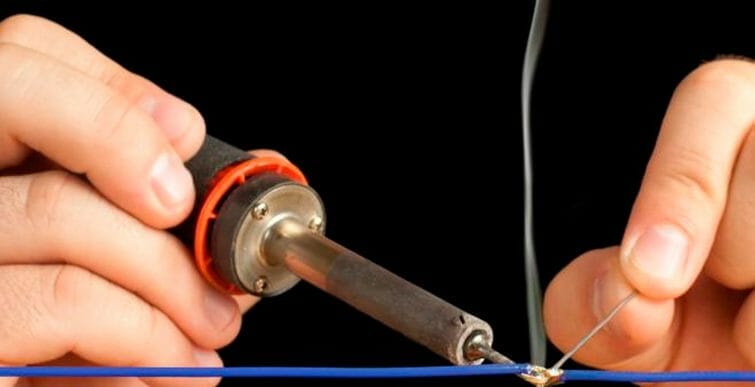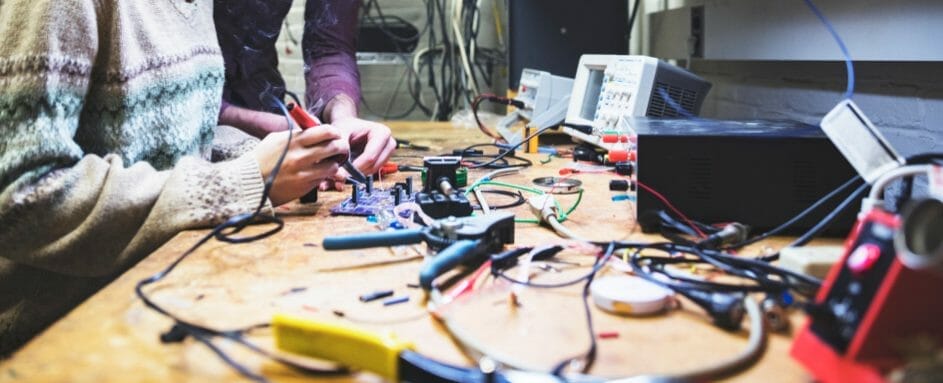Welcome to our comprehensive guide on soldering stainless steel wire. Soldering stainless steel wire can be a challenging task, but with the right techniques, tools, and equipment, it can be accomplished with ease. In this guide, we will provide you with all the necessary information to successfully solder stainless steel wire.
Before we dive into the soldering techniques, let’s first discuss the importance of using the right techniques and the benefits of soldering stainless steel wire. Understanding the material you are working with is crucial for achieving a successful solder joint.
So, whether you are a seasoned professional or a beginner, this guide is perfect for you. Let’s get started!
Understanding Stainless Steel Wire
Stainless steel wire is a durable and versatile material that is commonly used in various applications, including construction, automotive, and jewelry making. It is made from a mixture of metals, including chromium, nickel, and carbon, which gives it its unique properties.
One of the main benefits of stainless steel wire is its resistance to corrosion, which makes it suitable for use in harsh environments. It is also strong, ductile, and has a high melting point, making it an ideal material for soldering.
Stainless steel wire comes in various grades, each with its unique properties and uses. The most common grades include 304, 316, and 430 stainless steel wire. 304 stainless steel wire is the most widely used and is suitable for most applications, while 316 stainless steel wire is more corrosion-resistant and often used in marine environments. 430 stainless steel wire is lesser in quality but is more affordable than other grades and is often used for decorative purposes.
Properties of Stainless Steel Wire
| Properties | Description |
|---|---|
| Corrosion resistance | Stainless steel wire has excellent resistance to corrosion and rust |
| Strength | Stainless steel wire is strong and ductile, making it ideal for use in various applications. |
| Melting point | Stainless steel wire has a high melting point, making it suitable for use in high-temperature applications. |
| Electrical conductivity | Stainless steel wire has good electrical conductivity. |
Preparing Stainless Steel Wire for Soldering

Soldering stainless steel wire can be a challenging task, especially if the wire is dirty or oxidized. Proper preparation is essential for achieving a strong and reliable solder joint. Here are the necessary steps you need to take before soldering:
| Step | Description |
|---|---|
| 1 | Remove any dirt, grease, or oil from the wire using a degreaser or a solution of hot water and detergent. Rinse the wire thoroughly and dry it with a clean cloth or compressed air. |
| 2 | Sand the wire’s surface using a fine-grit sandpaper or a sanding wheel to remove any remaining impurities and to create a rough surface that will allow the solder to adhere better. |
| 3 | Apply a flux to the wire’s surface to prevent oxidation and to promote solder flow. Use a flux that is specifically designed for stainless steel, such as a silver brazing flux. |
| 4 | Place the wire in a holder or a jig to keep it steady while soldering. This will help prevent the wire from moving or bending during the soldering process, which can weaken the joint. |
By following these steps, you will ensure that your stainless steel wire is properly prepared for soldering, which will result in a strong and reliable joint.
Soldering Techniques for Stainless Steel Wire

There are several soldering techniques that can be used with stainless steel wire, and each method has its own advantages and disadvantages. Here are some of the most common techniques:
Silver Soldering
Silver soldering, also known as brazing, involves melting a silver-based solder with a torch or furnace and then applying it to the joint with a flux. This technique creates a strong and durable joint that can withstand high temperatures and is corrosion-resistant.
When silver soldering stainless steel wire, it’s important to use a flux specifically designed for stainless steel to prevent oxidation and ensure a good bond. It’s also crucial to clean the wire thoroughly to remove any oils, grease, or other contaminants that could interfere with the solder flow.
Brazing
Similar to silver soldering, brazing uses a brass-based solder instead of silver. The brass solder has a lower melting point, making it easier to use for delicate or intricate work.
However, brazing may not be suitable for all stainless steel wire applications, as the brass can react with certain chemicals and cause corrosion in some environments.
Soft Soldering
Soft soldering involves melting a tin-based solder with a soldering iron or gun and then applying it to the joint with a flux. This technique is inexpensive and easy to learn, making it a popular choice for hobbyists and DIY enthusiasts.
However, soft soldered joints are not as strong as those created with silver or brass solder, and they may not be suitable for heavy-duty applications.
Regardless of the technique used, it’s important to ensure that the solder flows evenly and completely covers the joint for a strong bond. Excessive heat can damage the stainless steel wire or weaken the joint, so it’s important to work carefully and follow the manufacturer’s instructions for the soldering tools and equipment used.
Tools and Equipment for Soldering Stainless Steel Wire

Before soldering stainless steel wire, it is essential to have the right tools and equipment on hand. This will ensure that the process is smooth and successful, producing clean and strong solder joints. Here are some of the tools and equipment you will need:
| Soldering Iron | A soldering iron is the main tool used for soldering stainless steel wire. It should have enough power to heat the wire sufficiently, and the tip should be small enough to work with precision. A temperature control feature is also highly recommended |
|---|---|
| Soldering Station | A soldering station provides a stable platform for the soldering iron and often includes additional features like temperature regulation, variable voltage, and interchangeable tips. This makes it easier to use the soldering iron in a controlled and efficient manner. |
| Flux Applicator | A flux applicator is used to apply flux to the joint area before soldering. It ensures that the flux is evenly distributed, thus promoting proper solder flow and joint strength. Flux applicators come in various sizes, shapes, and types, including brushes, bottles, and syringes. |
| Wire Cutters | Wire cutters are used for cutting stainless steel wire to the desired length. It is important to use high-quality cutters with hardened blades that can cut through tough wire without leaving burrs or jagged edges. |
| Cleaning Supplies | Before soldering stainless steel wire, it is crucial to clean the surface thoroughly to remove any contaminants that may affect the quality of the solder joint. Cleaning supplies may include sandpaper, steel wool, degreasers, and solvents. |
| Protective Gear | Soldering involves heat and potentially harmful fumes. Therefore, it is necessary to wear proper protective gear like safety glasses, heat-resistant gloves, and a respirator mask. This will protect the eyes, skin, and lungs from hazards associated with the soldering process. |
Having the right tools and equipment is half the battle when it comes to soldering stainless steel wire. By investing in high-quality products, proper preparation, and safety measures, you can ensure that your soldering project is a success.
Common Challenges and Troubleshooting
When soldering stainless steel wire, there can be some common challenges that may arise. Here are a few troubleshooting tips to help you overcome them:
Oxidation
Oxidation is a common issue when soldering stainless steel wire. It can cause the solder to bead up and not flow correctly. To prevent oxidation, make sure to clean the surface of the wire thoroughly before soldering. You can also use a flux that helps prevent oxidation.
Poor Solder Flow
If the solder is not flowing correctly, it may be due to improper heat application. Make sure to use the appropriate temperature for the soldering technique you are using. You can also try adding more flux to help the solder flow more smoothly.
Joint Strength Issues
If the joint is not strong enough, it can be due to a lack of solder or improper soldering technique. Make sure to use enough solder to create a strong joint, and ensure that the solder flows into all areas of the joint.
Pro tip: If you are still experiencing issues, try practicing on a scrap piece of stainless steel wire first before moving on to your actual project. This can help you identify and troubleshoot any problems before you start soldering on your final piece.
Read More : Is it Possible to Solder to Stainless Steel? Find Out Now!
Safety Precautions When Soldering Stainless Steel Wire
Soldering stainless steel wire can be a safe and enjoyable process as long as proper safety precautions are taken. Although soldering may seem like a simple task, it involves high temperatures and potentially hazardous chemicals, which can pose dangers if not handled correctly.
Always remember to prioritize safety when soldering stainless steel wire.
| Safety Precautions | Description |
|---|---|
| Wear protective gear | Always wear gloves, safety glasses, and protective clothing when soldering. This will help prevent burns and protect your skin from harmful chemicals. |
| Work in a well-ventilated area | Soldering produces fumes that can be harmful if inhaled. Make sure to work in a well-ventilated area or use a fume extractor to remove any harmful chemicals from the air. |
| Handle soldering tools safely | Always handle soldering irons and other tools carefully to avoid burns or other accidents. Allow tools to cool down completely before handling them. |
| Use caution when working with electricity | Make sure to unplug soldering irons when not in use and avoid touching any live electrical wires. |
By following these safety precautions, you can solder stainless steel wire with confidence and stay safe while doing so.
Duplex Stainless Steel Plate for Soldering Applications
When it comes to soldering stainless steel wire, using the right type of stainless steel is crucial for achieving a strong and durable joint. Duplex stainless steel plate is a popular choice for soldering applications due to its superior strength and corrosion resistance.
Duplex stainless steel is a combination of two microstructures: austenitic and ferritic. This unique composition results in a material that is extremely strong and resistant to corrosion, making it ideal for use in harsh environments.
When soldering with duplex stainless steel, it is important to use the correct soldering technique and flux. Soft soldering is typically not recommended, as it may not provide a strong enough joint. Silver soldering and brazing are both effective techniques for soldering duplex stainless steel, as they produce a strong joint that can withstand high temperatures and harsh conditions.
Additionally, when soldering with duplex stainless steel, it is important to use a flux that is specifically designed for this type of material. The flux should be able to remove any oxide layers that may form on the surface of the steel, allowing for a clean and efficient solder joint.
Benefits of Duplex Stainless Steel Plate
There are many benefits to using duplex stainless steel plate for soldering applications. Some of the key advantages include:
- High Strength – Duplex stainless steel is extremely strong and can withstand heavy loads and high stress levels.
- Corrosion Resistance – Duplex stainless steel is highly resistant to corrosion, making it ideal for use in harsh environments and corrosive materials.
- Cost Effective – Despite its superior properties, duplex stainless steel is often more cost effective than other types of steel, making it a popular choice for a variety of applications.
Overall, using duplex stainless steel plate for soldering applications is a wise choice for those looking to achieve a strong and durable joint that can withstand high stress and harsh conditions.
What Are the Steps for Sublimating Stainless Steel in the Ultimate Guide?
The ultimate stainless steel sublimation guide provides a comprehensive overview of the steps involved in sublimating stainless steel. From preparing the surface and selecting the appropriate design to applying heat and pressure, this guide covers it all. With helpful tips and techniques, you can create stunning and long-lasting sublimated designs on stainless steel products. Dive into the guide and unlock the potential for personalized and unique stainless steel creations.
What Tools and Techniques are Required for Soldering Stainless Steel Wire?
Soldering stainless steel wire requires specific tools and techniques to ensure a successful outcome. One crucial aspect is cutting stainless steel wire correctly, as it greatly impacts the soldering process. To achieve precision, wire cutters with hardened steel jaws are recommended. These cutters can cleanly sever the wire without causing any deformations or damage. By employing this technique, the resulting cut ends will facilitate a secure and stable soldering joint, ensuring the durability of the connection.
Frequently Asked Questions about Soldering Stainless Steel Wire
Here are some frequently asked questions regarding soldering stainless steel wire:
Q: Is it difficult to solder stainless steel wire?
A: Soldering stainless steel wire can be more challenging than soldering other materials, such as copper or brass. However, with the proper techniques and tools, it can be done successfully.
Q: What type of solder should I use for stainless steel wire?
A: It is recommended to use a high-temperature silver solder for stainless steel wire. This type of solder has a higher melting point and creates a strong bond with stainless steel.
Q: Do I need to clean the stainless steel wire before soldering?
A: Yes, it is essential to clean the stainless steel wire before soldering. Any residue or contaminants on the wire can hinder the soldering process and weaken the joint. Use a degreaser or rubbing alcohol to clean the wire thoroughly.
Q: Can I use a regular soldering iron for stainless steel wire?
A: No, regular soldering irons may not achieve the high temperatures required for soldering stainless steel wire. It is recommended to use a high-powered soldering station with a temperature control feature and a specialized stainless steel soldering tip.
Q: Why is flux necessary for soldering stainless steel wire?
A: Flux helps to remove any oxidation on the stainless steel wire surface, allowing for a clean and secure bond with the solder. It also helps to prevent further oxidation during the soldering process.
Q: Can I solder different types of stainless steel wire together?
A: Yes, it is possible to solder different types of stainless steel wire together. However, it is essential to ensure that the stainless steel types are compatible and that the appropriate soldering technique and solder type are used.
Q: What safety precautions should I take when soldering stainless steel wire?
A: Always wear protective gear, such as safety glasses, gloves, and a respirator mask, when soldering stainless steel wire. Work in a well-ventilated area to avoid inhaling harmful fumes, and keep a fire extinguisher nearby in case of accidents.






